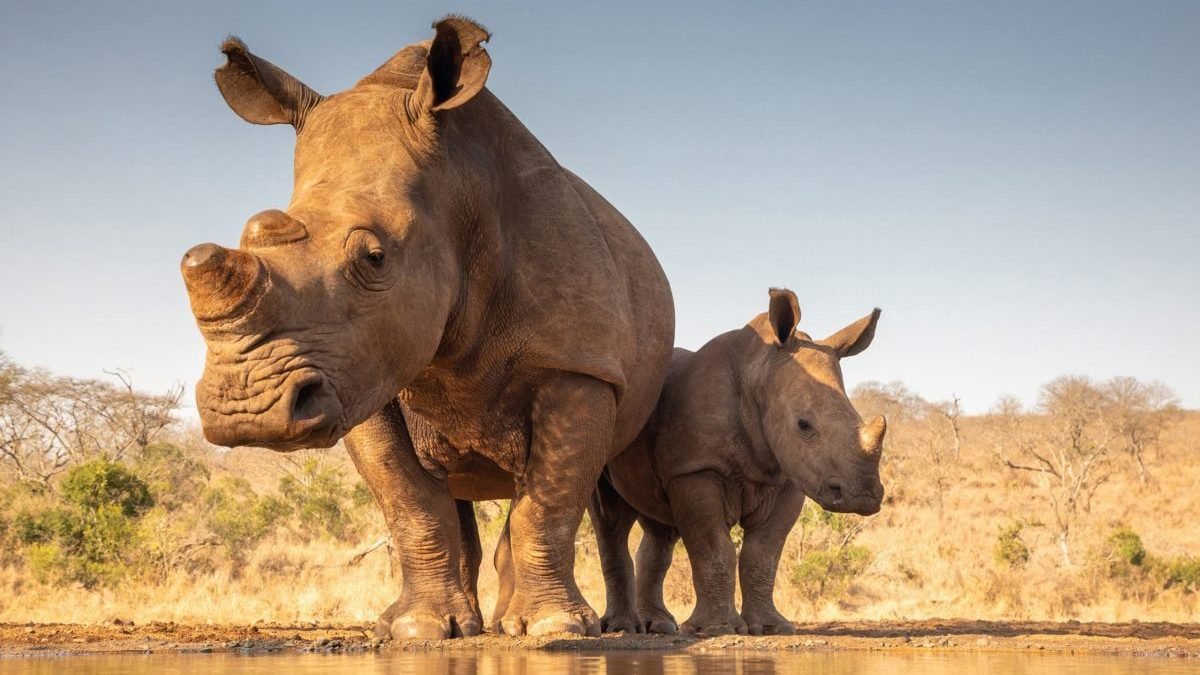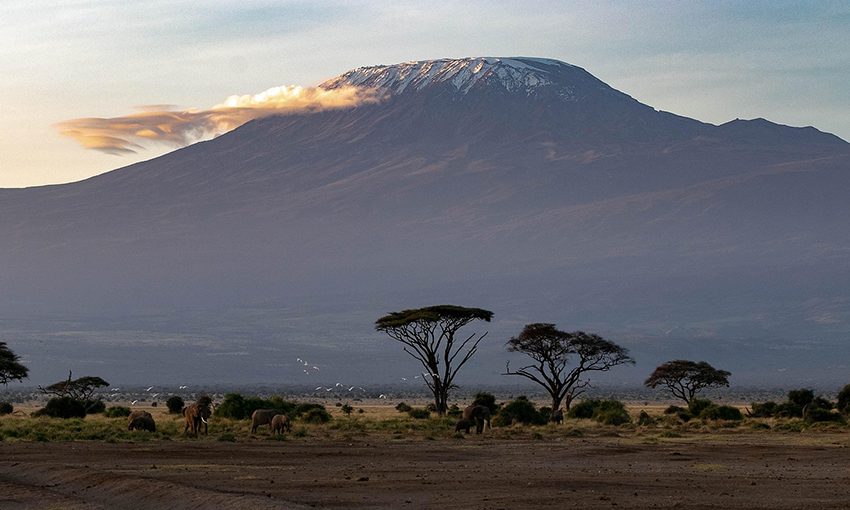Luxury Tanzania Safaris
Tour Overview
Every year, over 1.5 million wildebeest, accompanied by 200,000 zebras and gazelles, embark on a breathtaking 3,000-kilometer odyssey across the Serengeti (Tanzania) and the Masai Mara (Kenya). Driven by ancient instincts and the rhythm of the seasons, this awe-inspiring migration is a relentless quest for survival—a dance between life, death, and rebirth that has played out on Africa’s plains for millennia.
Tour Highlights
- The migration fuels Africa’s highest concentration of predators. Watch lions, cheetahs, and leopards stalk the herds, while vultures circle overhead—an unscripted drama of the wild.
- The largest terrestrial mammal migration on Earth, dubbed the "World Cup of Wildlife," where thunderous herds stretch as far as the eye can see.
- Drama at Every Turn: Crocodile-infested river crossings, prowling lions, and hyenas turn this journey into a gripping battle for survival.
- Calving Season (Feb–Mar): Witness over 500,000 wildebeest calves born in the southern Serengeti’s nutrient-rich volcanic plains—a tender yet vulnerable spectacle.
- River Crossings (Jul–Oct): Brace for heart-pounding action as herds brave the Mara River’s raging currents and lurking Nile crocodiles in the Masai Mara.
What's included
Itinerary
Drive to your Tented Camp / Lodge for diner and overnight on Full Board Basis.
Proceed with afternoon game drive as you drive to your Camp for diner and overnight at Tented Camp / Lodge on full board Basis.
FAQ
Tanzania offers the best and most consistent wildlife viewing opportunities year-round. The dry season (June to October) is generally considered the best time overall for game viewing. However, even the wet season in Tanzania (November to May) has an amazing amount to offer in terms of wildlife viewing. April and May are probably the least optimal months to go since many camps close during the long rains. However, there are still enough places open for us to put together a magnificent itinerary for you if those months are your only option. And, since it is the low season, you will enjoy the benefits of a less crowded and less expensive journey!
Your passport must be valid for at least six months on the day you depart from your home country. In addition, your passport must contain at least four blank visa pages that are two sets of two opposing blank visa pages.
It is very important to set an appointment with a travel doctor in your home country before you come. Depending on the situation, you might take vaccine for yellow fever. If you go to Zanzibar or come from (or transit in) an endemic yellow fever country, proof of vaccination against yellow fever may be required at the airport. Vaccinations are recommended for travelers going to Tanzania: yellow fever, hepatitis A and a combined tetanus, diphtheria and inactivated polio vaccine (Td/IPV). Proof of Yellow Fever vaccination is required if you are traveling to Tanzania from countries that have Yellow Fever Endemic or travelers who transit in Yellow Fever Endemic Areas, only if the transit period at the airport is 12 hours or more.
Check the CDC’s website for updated health information for travelers to Tanzania. http://wwwnc.cdc.gov/travel/destinations/traveler/none/tanzania
If you use prescription medication or if you suffer from a medical condition that requires special consideration, it is best to consult your physician and inform the aircraft company before flying. You may require a medication passport to show authorities abroad and flight attendants that you need certain medication. In the event that you lose your medication or require additional supplies abroad, the medication passport will allow you to refill your prescription. In addition, you will usually need a doctor’s certificate in the form of a Schengen medical certificate or a medical certificate written or translated into English. The same may apply to traveling with medical equipment. Enquiring about these things may take weeks, so it is best to start well in advance.
Travel insurance is the traveler’s own responsibility. We recommend that you take out travel insurance in your home country that will cover, for instance, loss, damage or theft of luggage, money and other valuables, medical expenses, repatriation expenses, etc. Consider also any additional cover you may need, such as for extreme, specialist or high-risk sports (scuba diving, canoeing, mountain biking, etc.). Mountain climbing requires a separate mountaineering insurance policy. Travel with Us accepts no liability whatsoever in connection with any such activities.
Situated in the eastern part of the African continent, bordering on the Indian Ocean, Tanzania enjoys mostly warm weather all year round. The climate varies considerably in this large country, but a tropical wet and dry climate, or tropical savanna climate, predominates. The eastern portion of Tanzania has more periods of rainfall and droughts, while Central Tanzania is predominantly very dry. The main rainy season or ‘long rains’ in Tanzania lasts from March until the end of May. This is the time when everything turns vibrant green – a great time to see wildlife! Then, between June and August, it is drier and cooler in Tanzania. The beginning of October marks the start of the period of ‘short rains’ during the daytime, with warm summer temperatures. January, February and March are the driest summer months of the year. As your tour will take you to various altitudes, ranging from mountainous regions to lower coastal areas, temperatures will differ. In view of the different seasons and the fact that it can get a little chilly at night, it is advisable to pack clothes that you can layer easily.
The local currency is the Tanzania Shilling (TZS). In hotels and restaurants, bills can normally be paid in USD, but in local shops and markets, you will need TZS which is available at most banks and bureaus in major towns. ATMs are available in Dar es Salaam and Arusha, and most major towns, but once you are out on safari (in the bush), you will not have access to either banks or ATMs, so exchange sufficient funds beforehand. Credit cards are normally accepted in the bigger hotels and restaurants, but in the smaller lodges or hotels, there is often no access.
In honor of their religious beliefs and culture, Tanzanian people always dress modestly. In the privacy of your accommodations or at the beach, you do not need to concern yourself with any dress code, but if you mix with the local population, it is appropriate to wear clothes that cover the body, especially shoulders and legs. This is a simple courtesy that shows respect for the local population.
- All necessary documents: passport, vaccine certificate and others that might apply.
- Any medication you might need: This should include medication for possible common situations like headaches or diarrhea.
- Sun block, sunglasses, hat, lip balm and moisturizer.
- Your camera: we recommend bringing a wide lens (about 17-55mm) for those scenery pictures, and a telephoto lens (in the 200-400mm range) to catch animals at a distance.
- Binoculars: We do provide a pair of top notch binoculars in the vehicle but feel free to bring your own which you may be more used to.
- Clothes: Comfortable and casual clothing, with khaki, beige or green colors. You should pack t-shirts, shirts with long sleeves, long pants, a sweater and a jacket (for the cold mornings), swimwear (if the accommodations you selected have a pool or if you do a beach extension) and comfortable hiking shoes.
- Insect repellent





















